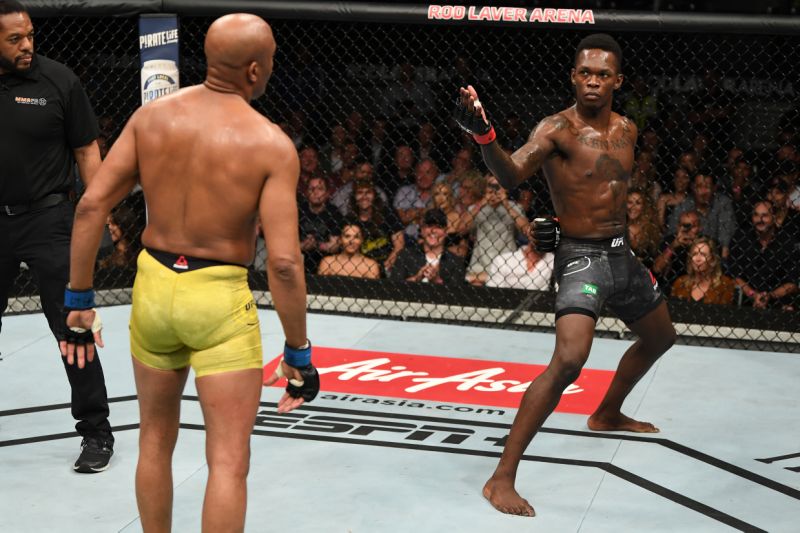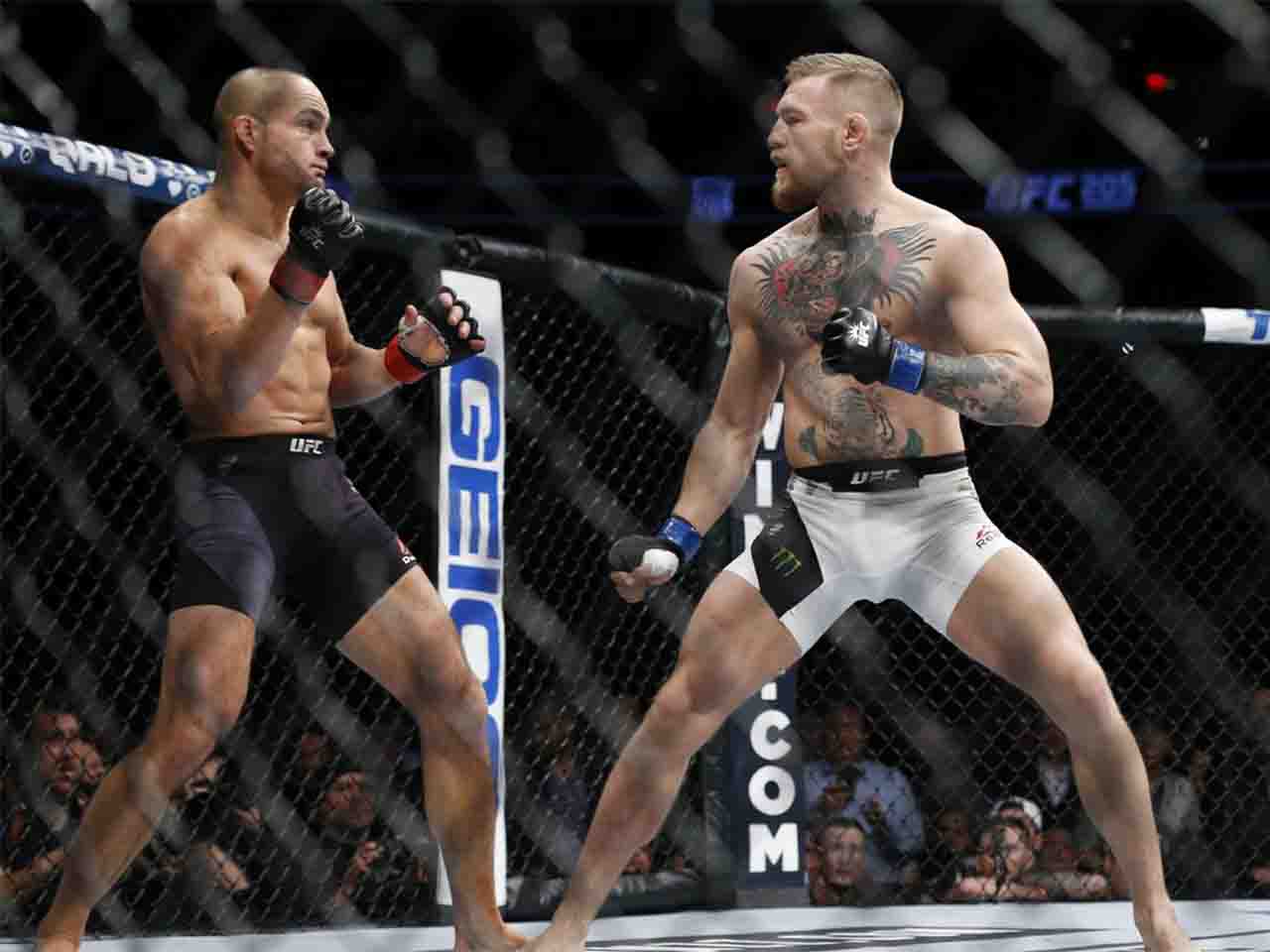
Mixed martial arts (MMA) came as an innovative idea with a mission: gather a variety of martial arts, let their representatives fight inside a ring or cage, and determine which style is the most effective! Considering how violent, unorganized and dangerous its beginnings were, many people believed that this form of entertainment would be short-lived and probably banned. However, two decades later, MMA enjoys a massive following and stands as the most constantly evolving, fastest growing sport around the globe! The foundation for this meteoric rise resides in the history and evolution of MMA, which is as fascinating as the fight themselves.
Ancient History
Although today’s form of modern MMA is relatively young, the origins of the sport date far back into ancient history. Sportsmen in ancient Greece came shockingly close to modern MMA with their version of hand-to-hand combat, a brutal sport called “Pankration (all powers)“. The contest was first introduced around 650 BC, and soon became a staple event of the Olympiad. It represented a combination of wrestling, punches, and kicks, with the athletes utilizing many locks and chokes on the ground — techniques which would surface again through Catch Wrestling and Brazilian Jiu-Jitsu. Similarly, the Chinese military during the Han Dynasty developed a combat system called Shuai Jiao which synthesized elements of wrestling and traditional Kung Fu. These represent some of the earliest blends of diverse styles that would later become known as MMA.
Birth Of Modern MMA
Fast forward to the 20th century, where a number of events pushed MMA towards its official establishment. In 1914, legendary Japanese judoka Mitsuyo Maeda took Judo (at the time known also as Kano Jiu-Jitsu) to Brazil and proceeded to pass the knowledge of this traditional martial art on the famous Gracie family. The Brazilians shifted the art’s emphasis from throws to prolonged grappling exchanges. In addition to improving the effectiveness of the technique, it allowed for a downed fighter to find ways to attack and even finish an opponent from a disadvantaged position — thus establishing the great art of Brazilian Jiu-Jitsu! Parallel to BJJ, another hybrid sport of striking and grappling called Vale Tudo (literally “anything goes” in Portuguese) emerged in the 1920s. Although it incorporated many styles, Vale Tudo fights were typically revolved around an intense rivalry between BJJ and Luta Livre — a similar grappling system popular amongst the poorer class in Brazil.
UFC highlight reel
From the very beginning, the Gracie family firmly believed that BJJ was the most effective fighting technique. To prove their point, they issued their famous “Gracie challenge” which called on any fighter from any martial art to come to the Gracie gym and test their skills against BJJ. The challenge became so popular that fighters from all continents and martial arts came to Brazil to confront this mysterious technique. However, most would find themselves choked, slept and generally embarrassed due to a lack of grappling experience and submission skills.
We must point out that the explosion of martial arts movies during the 1960s and 1970s played a crucial role in the decades to follow. Movies like “Enter the Dragon“, featuring martial arts superstar Bruce Lee as their leading figure, were the first ones to introduce the notion of style-vs-style combat to the big screen and inspire the later foundations of MMA as a sport on its own.
Bruce Lee helped pave the way for modern day MMA
Shooto, perhaps the earliest official MMA organization, was founded in 1985 in the land of the rising sun. Originally built around turning professional wrestling into an effective real-world combat system, Shooto’s rules evolved through the years and developed into a true mixed martial arts competition. However, for most people, the birth of modern MMA was signalled by the establishment of the Ultimate Fighting Championship (UFC), who — with the help of the Gracie family — held their first event on November 12, 1993. Apart from a glaring lack of rules and disregard for safety, the early days of UFC will forever be remembered for the domination of one man and his unique fighting style.

BJJ’s Dominance and Evolution of Styles
Royce Gracie and his brother Rickson came to the US from Rio with one mission: launch the UFC and show the world the effectiveness of Brazilian Jiu-Jitsu! The impact BJJ had on this newly established sport was undeniable. Gracie would dominate every giant the UFC threw at him and score an incredible 11 first-round finishes from UFC 1 (1993) to UFC 5 (1995). Royce Gracie established the BJJ as the most important aspect of MMA and the family mission was more than accomplished.
Royce Gracie vs Ken Shamrock in the early UFC days
In the late 90s we witnessed several elite wrestlers enter the sport, their relentless style prevailing over the competition in the following years. The great Tito Ortiz is a classic example of a wrestler finding success with cross-training, adding submission defence and strikes into their ground game and binding this combination to perfection. The wrestlers’ art of dragging an opponent to the mat and unleashing a barrage of strikes, known as “ground and pound”, has become a widely beloved technique! Conversely, other successful wrestlers like Chuck Liddell would master boxing & kickboxing techniques and use their defensive wrestling to keep the fight on the feet. This style dominated for almost a decade and like BJJ, remains one of the most effective weapons of the present day.
However, the MMA game is constantly evolving and from the mid 2000s, flashier striking techniques from traditional martial arts like Tae Kwon Do and Karate began to reemerge. This new generation of strikers already had the foresight to include grappling skills in their game, giving them a massive advantage over the “old-school” fighters. Legends like Anderson Silva and George St. Pierre were true game changers, and probably the most well-rounded fighters in history at their height. Their styles may have differed in practice, but both incorporated four foundational martial arts: Wrestling, Muay Thai, Boxing, and BJJ. Today, success inside the Octagon most often depends on how well-versed a fighter is in these four fundamentals.
https://youtu.be/Ax8xsmtL-lg
Anderson Silva was was one of the most dominant UFC Champions
Adapting The Rules And popularization Of MMA
Lack of rules, gear, and safeguards for fighters’ safety are the main reasons why the beginning days of MMA are portrayed as barbaric and primitive. During the early UFC events, only a handful of moves were forbidden: eye pokes, groin strikes and biting. The fights were violent and bloody enough that no media house wanted to get involved with such a perceived freak show. Everything hit a breaking point in 1996 when Sen. John McCain famously stated that MMA is “human cockfighting”, doing everything in his power to destroy it. This resulted in the sport being banned in almost all 50 states!
That’s not a sport, that’s a throwback to the Roman Colosseum.” – John McCain (source)
Luckily, this was a huge wakeup call for the UFC who began putting new rules into action and undertaking everything possible to make MMA more palatable for the general public. Between 1996 and 2000, they implemented the following game-changing rules:
- Instituting MMA judges
- Introduction of weight classes
- Adding a boxing 10 point scoring system
- Rounds and time limits
Unfortunately this wasn’t enough and the UFC would still see serious changes shortly after. In 2000, Dana White and his business associates Lorenzo and Frank Fertitta set a deal with the bankrupt SEG Company and bought the UFC for $2 million dollars. A year later, they created Zuffa, LLC and immediately switched their focus to adopting a more thorough set of rules which would help get the sport legalized and televised.
“Without [McCain] doing what he did back in the 90’s to force regulation, this sport would be dead.” – Former UFC CEO, Lorenzo Fertitta (source)
The first big step forward came in April, 2001 when the New Jersey State Athletic Control Board put forward a set of rules which would later become Unified Rules of Mixed Martial Arts (2009). Putting the sport under stricter regulations and building the UFC brand opened the doors for many TV opportunities in the future. In 2011, Zuffa set a deal with FOX network, which secured for the UFC an income of incredible $700 million over the next seven years.
On July 3, 2015, the UFC announced its collaboration with the United States Anti-Doping Agency (USADA), with the aim of ensuring the fighters were competing clean and making the sport more safe and equal. Although in the fallout we saw many fighters test positive and many fights fall apart, the company’s image benefited immensely.
Where Is MMA today?
Interestingly, UFC set out prove once and for all which fighting style was the most effective. While BJJ proved dominant at first few could predict that 25 years later, the answer would be: all of them!
Stylistically, the difference between the MMA pioneers and modern-day fighters is so enormous that one could easily believe the sport had evolved for a longer period! Although we observed many styles dominating over others, the only successful style in today’s competition incorporates a hybrid mixture of various forms of striking and grappling. MMA gyms have become combat laboratories, constantly producing different training systems and adding new elements. This enables any fighter to hold onto their traditional base (wrestling, BJJ or striking) and quickly build a more complete game around it. Some of the most successful fighters like Jon Jones, Stipe Miocic and Tyron Woodley are perfect examples of a modern-day MMA fighter.
As far as the UFC is concerned, business is booming! Although there are other successful promotions all over the world like Bellator and KSW, UFC still holds the monopoly and dictate the rules of the fighting business. Earlier in 2019, they announced its partnership with the biggest sporting network, ESPN. Without a doubt, the two companies will bring the sport to the highest levels and we’re more than excited to see future changes and evolution of the sport. As a fan, there’s never been a better time to get into MMA for yourself. Many MMA gyms in Vancouver — and the world over — are attracting world class talent in Muay Thai, BJJ, Kickboxing, and beyond. Having a personal trainer is great, sure, but why not sharpen your skills and join the fun in helping the sport evolve even further?
